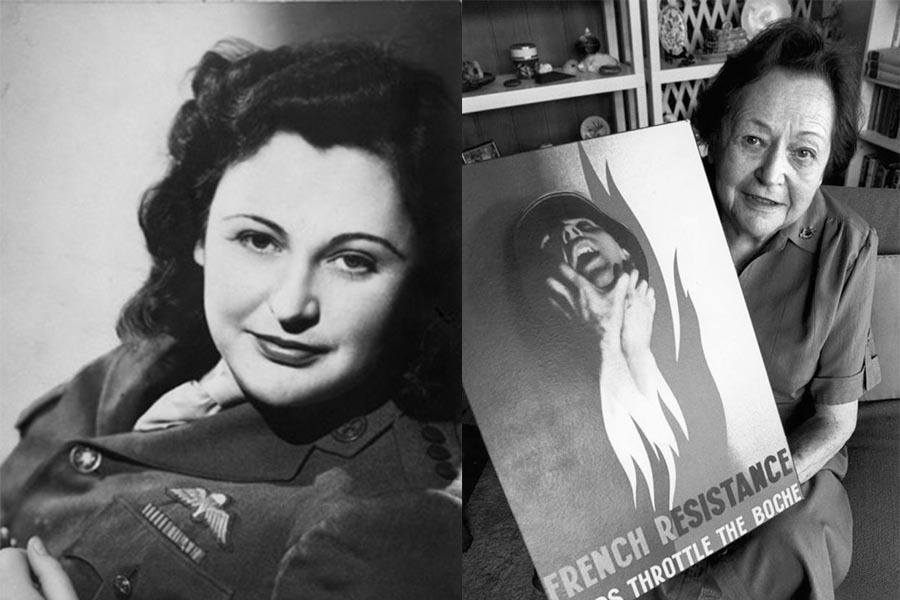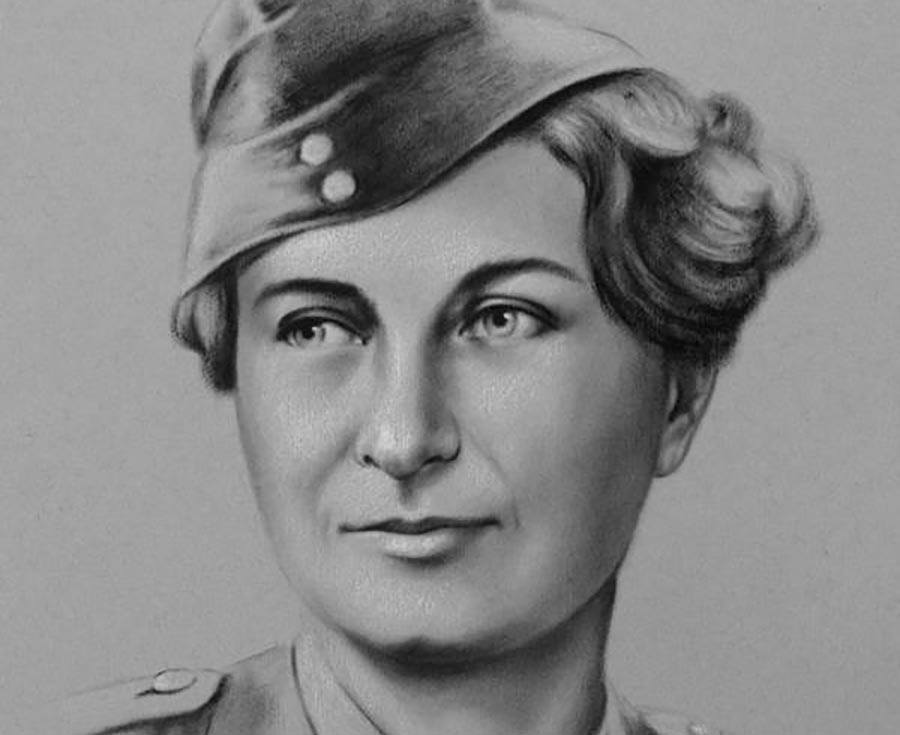Moskolonel
6 years agoLegend
WW2 girls
Hey! We have all followed the controversy of women in BFV and i create this post to give new examples putting an end to the controversy of detractors. Although uncommon there have been women, russia...
Hey here an other power girl!
Nancy Wake:

The Gestapo called her the “White Mouse” for her ability to elude capture. For a time, Germany considered her the most wanted woman in the country. Meet Nancy Wake.
Wake, the wife of a wealthy Frenchman, was the most decorated woman of the Allied forces. During her early days in the Resistance, Wake spent her time smuggling men out of France and transporting falsified documents and contraband supplies. While at one point captured and interrogated for several days, Wake never once gave up any secrets.
After escaping in 1943 to Britain, Wake joined the Special Operations Executive, an agency of British intelligence. After being trained in skydiving and weapons, she was dropped back into France as an official British spy.
Wake would go on to lead 7,000 Maquis guerilla troops, blowing up Nazi buildings and sabotaging vehicles and supplies. She once killed an SS Sentry with her bare hands.
Not losing her * with age, an 89-year-old Nancy Wake said, “Somebody once asked me, ‘Have you ever been afraid?’ … Hah! I’ve never been afraid in my life.”
Here more info on wiki about this girl of WWII:
Susan Travers

When German troops surrounded the Bir Hakeim fort in Libya, Britain-born Susan Travers – the daughter of a Royal Navy admiral – refused to leave with the other female personnel. The only woman in the French Foreign Legion, she held out inside the fort with the other soldiers for 15 days in an attempt to withstand the heavy artillery of the Germans.
When food and supplies ran out, Travers and her lover General Marie-Pierre Kœnig knew that no help was coming, and it was up to them to save those who remained. And so they decided to make a run for it.
With Travers driving the lead truck, the remaining Free French soldiers made a daring escape. The Germans were none the wiser – until one of the trucks struck a landmine and exploded. When Kœnig told Travers “If we go, the rest will follow,” Travers hit the gas and darted their vehicle through the desert under heavy fire.
Her lead vehicle would take 11 bullets in total, but would make it to the border – along with the 2,500 Free French soldiers that she helped save. Travers went on to drive a “self-propelled anti-tank gun” in France, and became an official member of the Legion by leaving her gender off the application.
Travers was the recipient of the Legion d’Honneur, the Medaille Militaire, and the Croix de Guerre, all very high honors in the French Military. Of her desert dash? “My main concern was that the engine would stall,” Travers said. “It is a delightful feeling, going as fast as you can in the dark.”
Little more here : https://en.wikipedia.org/wiki/Susan_Travers
“Simone Segouin, mostly known by her codename, Nicole Minet, was only 18 when the Germans invaded. Her first act of rebellion was to steal a bicycle from a German military administration, slicing the tires of all of the other bikes and motorcycles so they couldn't pursue her. She found a pocket of the Resistance and joined the fight, using the stolen bike to deliver messages between Resistance groups.
She was an extremely fast learner and quickly became an expert at tactics and explosives. She led teams of Resistance fighters to capture German troops, set traps, and sabotage German equipment. As the war dragged on, her deeds escalated to derailing German trains, blocking roads, and blowing up bridges, helping to create a German-free path to help the Allied forces retake France from the inside. She was never caught.
Segouin was present at the liberation of Chartres on August 23, 1944, and then the liberation of Paris two days later. She was promoted to lieutenant and awarded several medals, including the Croix de Guerre.
After the war, she studied medicine and became a pediatric nurse. She is still going strong, and this October (2020) will turn 95.”
I've thrown a before and after photo together, enjoy this absolute legend 🙂
You are speeder than me i just want to post it this morning 😉.
Freddie Oversteegen

Freddie Oversteegen was only 14, petite with long braids, when she became an assassin and saboteur.
It was 1940, Germany had invaded the Netherlands, and she and her sister, Truus, who was two years older, had been recruited by the local Dutch resistance commander, in the city of Haarlem.
“Only later did he tell us what we’d actually have to do: Sabotage bridges and railway lines recalled in a 2014 book, “Under Fire: Women and World War II.” “We told him we’d like to do that.”
Then the commander added, “ ‘And learn to shoot — to shoot *,’ ” she said.
“I remember my sister saying, ‘Well, that’s something I’ve never done before!’ ”
The sisters, along with a lapsed law student, Hannie Schaft, became a singular female underground squad, part of a cell of seven, that killed collaborators and occupying troops.
The three staged drive-by shootings from their bicycles; seductively lured German soldiers from bars to nearby woods, where they would execute them; and sheltered fleeing Jews, political dissidents, gay people and others who were being hunted by the invaders.
Freddie Dekker-Oversteegen, the last surviving member of the trio, died on Sept. 5, the day before her 93rd birthday, at a nursing home in Driehuis in the Netherlands, about five miles from where she was born.
Freddie Oversteegen was only 14, petite with long braids, when she became an assassin and saboteur.
It was 1940, Germany had invaded the Netherlands, and she and her sister, Truus, who was two years older, had been recruited by the local Dutch resistance commander, in the city of Haarlem.
“Only later did he tell us what we’d actually have to do: Sabotage bridges and railway lines,” Truus Menger-Oversteegen recalled in a 2014 book, “Under Fire: Women and World War II.” “We told him we’d like to do that.”
Then the commander added, “ ‘And learn to shoot — to shoot *,’ ” she said.
“I remember my sister saying, ‘Well, that’s something I’ve never done before!’ ”
The sisters, along with a lapsed law student, Hannie Schaft, became a singular female underground squad, part of a cell of seven, that killed collaborators and occupying troops.
The three staged drive-by shootings from their bicycles; seductively lured German soldiers from bars to nearby woods, where they would execute them; and sheltered fleeing Jews, political dissidents, gay people and others who were being hunted by the invaders.
Freddie Dekker-Oversteegen, the last surviving member of the trio, died on Sept. 5, the day before her 93rd birthday, at a nursing home in Driehuis in the Netherlands, about five miles from where she was born.
Freddie Oversteegen said she had felt sidelined after the war, in part because she had been a member of a Communist youth group; the Dutch government was soundly anti-Soviet.

Of the three young women, she was the most reserved, even though she was the first of them to fatally shoot a German soldier. (He had been lured from a bar into the woods.) Asked in 2016 by the online magazine Vice Netherlands how she had later dealt with her participating in wartime brutality, she replied, “By getting married and having babies.”
She also said that until she and Truus were profiled in a 2016 television documentary in the Netherlands titled “Two Sisters in the Resistance,” she had been envious of her sister. By then, Truus had become a well-known author.
“I have always been a little jealous of her because she got so much attention after the war,” she said of Truus. “But then I’d just think, ‘I was in the resistance as well.’ ”
In 2014, both sisters were awarded the Mobilization War Cross by Mark Rutte, the Dutch prime minister.
Ms. Oversteegen married Jan Dekker, an engineer for the Dutch steel producer Koninklijke Hoogovens. She is survived by their three children, four grandchildren and a stepbrother from her mother’s second marriage.
Freddie Nanda Oversteegen was born on Sept. 6, 1925, in Schoten, a village in the province of North Holland, to Jacob Oversteegen and Trijntje van der Molen. (Schoten is now part of Haarlem.)
Her parents were members of International Red Aid, a social service group organized by the Communist International. Freddie and her sister joined the Dutch Youth Federation, another Communist affiliate, and made dolls for children caught up in the Spanish Civil War.
After their parents divorced, amicably (Jacob sang a farewell serenade in French), the girls moved with their mother into a small North Holland apartment, where the sisters shared a bunk. As early as the mid-1930s, the family took in Jews fleeing from Germany.
After the Germans invaded, Jews were hidden elsewhere because the Oversteegens feared that their Communist leanings might invite exposure. Many were discovered nevertheless.
“They were all deported and murdered,” Ms. Oversteegen was quoted as telling the anthropologist Ellis Jonker in “Under Fire: Women and World War II.” “We never heard from them again. It still moves me dreadfully, whenever I talk about it.”
The sisters worked as nurses in Enschede, on the German border in eastern Holland, where they could surreptitiously report on a German military airport. They also distributed leaflets and anti-Nazi posters.
Their anti-Nazi activities brought them to the attention of Frans van der Wiel, the Dutch underground leader in Haarlem, who visited them and, with their mother’s blessing, persuaded them to join the Council of Resistance. Their mother gave them only one rule, Ms. Oversteegen said: “Always stay human.”
Retaining their humanity became more challenging once the sisters joined the seven-member underground cell based in Haarlem (they and Ms. Schaft were the only women) and learned that their job would entail blowing up bridges and railway tracks — and murder.
“Yes, I’ve shot a gun myself and I’ve seen them fall,” Freddie Oversteegen told a TV interviewer. “And what is inside us at such a moment? You want to help them get up.”
Still, she justified killing collaborators, who had betrayed her neighbors, and foreign soldiers, who had invaded and occupied her country.
“We had to do it,” she said. “It was a necessary evil.”
Ms. Oversteegen also rebutted criticism that the resistance had provoked German retaliation against innocent civilians.
“What about the six million Jews?” she said. “Weren’t they innocent people? Killing them was no act of reprisal. We were no terrorists. The real act of terror was the kidnapping and execution of innocent people after the resistance acted.”
The three women drew the line once, though, according to Kathryn J. Atwood’s book “Women Heroes of World War II: 26 Stories of Espionage, Sabotage, Resistance, and Rescue” (2011).
They had been ordered to kidnap the children of the politician and senior Nazi officer Arthur Seyss-Inquart, reichkommissar of the occupied Netherlands. The plan was to swap the children for imprisoned members of the Dutch underground. The three refused because the children could have been killed if the exchange went awry.
“We are no Hitlerites,” Ms. Schaft was quoted as saying in the book. “Resistance fighters don’t murder children.”